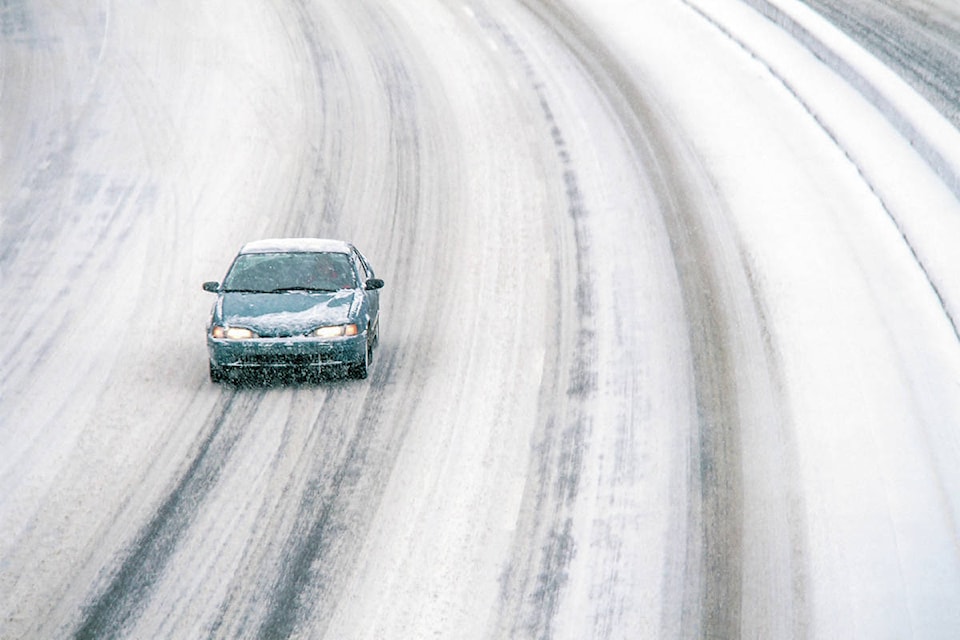By Brian Lawrence
No matter how experienced a driver is, winter weather adds an extra challenge. But a bit of education can make that challenge manageable.
“If we can identify what the hazards are, we can avoid them,” said Creston Driving Academy owner Bill Doeleman, a former Town of Creston bylaw officer who started the driving school in 2016.
Many of his clients are new teenaged drivers, who had practiced only in better weather, so Doeleman is offering a free winter lesson to former students.
“My students had no experience with driving in the snow,” he said. “I want them to be proactive and deal with situations before they have that aha moment.”
His lesson plan is helpful for older drivers, too, with tips on safely operating a vehicle in winter conditions, as well as suggestions for a winter safety kit.
The driving tips start with the need for snow tires — which are mandatory on mountain passes — and the importance of completely clearing snow from a vehicle before driving. He recalled watching a vehicle with snow on its roof rolling through a Cedar Street stop sign onto 16th Avenue South.
“All of a sudden a car came and they had to hammer the brakes,” he said.
That caused snow and ice from the roof to slide down the windshield, the weight preventing the windshield wipers from quickly clearing the obstruction.
Keeping the gas tank full will ensure a car’s occupants can stay warm during an unexpected delay — during, say, avalanche control on Kootenay Pass — and turning on headlights and taillights, rather than relying on automatic running lights, will make sure a vehicle is visible to others.
In slippery conditions, doubling the usual distance between vehicles is important, and gently applying the brakes and gas will help avoid severe motions that can make a driver lose control. Using cruise control is definitely unsafe in winter conditions.
“The problem is it can sometimes kick on a bit of throttle when you don’t want it,” said Doeleman.
While many drivers assume that having four-wheel drive will make them safer, that added traction can lead to dangerous overconfidence.
“ICBC actually charges more for insurance for four-wheel drive than two-wheel drive because the accident rates are higher,” said Doeleman.
If drivers do find themselves in a skid, they should remember to steer in the direction of the skid, and not to apply the brakes.
“What you’re doing is bringing yourself back in line,” said Doeleman. “You’re forcing the front end back into the same direction as the back.”
When driving downhill, it’s best to shift to a lower gear rather than into neutral, which could lock the wheels and encourage the vehicle to slide out of control.
“Let the engine slow you down,” said Doeleman.
Beyond actual driving techniques, Doeleman also stressed the importance of a safety kit, which should include, among other items, a flat-bladed shovel, ice melter, a flashlight and/or beacon, a first aid kit and a reflective safety vest. Dressing for the weather is also a must.
“Sometimes what’s fashionable isn’t necessarily what we need,” he said.
More experienced drivers may have heard Doeleman’s tips and suggestions before, but he would welcome the opportunity to provide a refresher.
“They’ve got to keep themselves safe,” he said. “We all have loved ones we want to go home to. If we learn to be safe on the road, we can make sure that happens.”
Email typos to
editor@crestonvalleyadvance.ca
Like us on Facebook and follow us on Twitter
